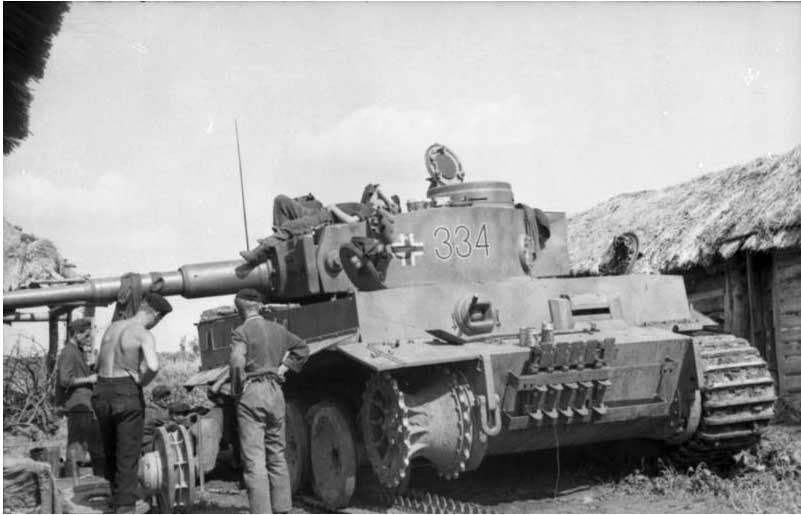July 1943 Battle of Kursk

Kursk
The largest tank battle in history took place at Kursk. The battle took place between July 3rd and 12th, 1943. The Germans planned a counter-offensive on Soviet positions. Their target was the Kursk salient. Their goal was to cut off the salient and capture the 60 Soviet battalions inside. The Soviets, however, were prepared, and 900 German tanks met 900 Soviet ones. The battle continued for nearly a week, and ended in a draw when Hitler ended the German offensive.. The Germans would never be able to amass the number of tanks they had at Kursk, while the Soviets were out-producing them every month.
The German planned a summer offensive against a Soviet Salient that was centered on Kursk. It was called Operation Citadel. The salient was 160 miles long North to South and 160 miles East to West. They hope to break through the Soviet lines and capture large number of Soviet soldiers. The hope was that the offensive would show that the Germans were still able to defeat their enemies.
The Soviets were warned by the British about the German plans and prepared accordingly with defense in depth. The Germans delayed their offensive to receive their latest tanks.
When the battle began the Germans had 780,000 men and 2, 928 tanks while the Soviets had 1,910,000 men and 5, 128 tanks. The Germans planned to attack from the North and the South of and capture the salient. The full German attack began on the evening of July 4th. The full attack began the next day . The Germans advanced in the first day 6 miles, but the Soviets put up strong resistance and the German offensive was halted.
In the South the German attack began at dawn on July 5th. Initially the German were more successful than in the North . They were able to easily break through the first line of the Soviet defense and then managed to break through the second line as well. However the Soviets put up fierce resistance. The Germans managed to advance close to the village of Prokhorovka their a major battle took place between German and Soviet armor. The Soviets launched an armored attack against the German Panzers. The Soviet counteroffensive was turned back by the Germans however it successfully stopped the German attack .
On July 12th after the allies had landed at Sicily Hitler called off the attack, believing he needed to strengthen his defensive in the West. The battle was a major strategic victory for the Soviets. It was the first time that a German offensive was stopped before it could advance. While the Soviet suffered higher losses than the Germans the Soviets could afford the losses while the German could not. This was the last time the German s engaged in a major strategic offensive in the East. It was also the largest tank on tank battle of World War II.
 >
>